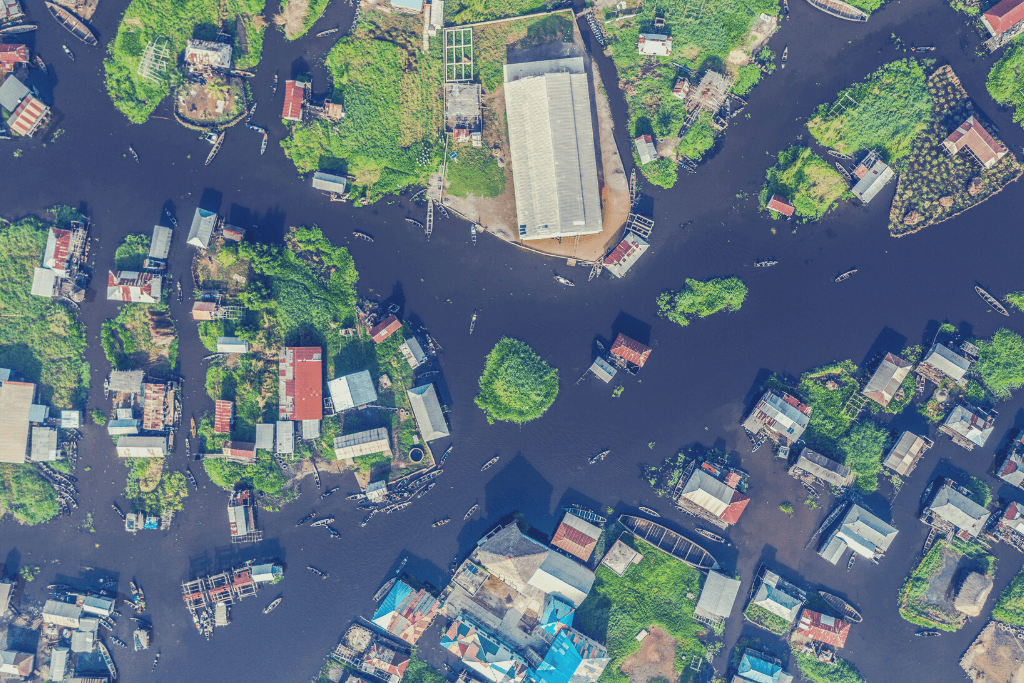Ganvie, endearingly nicknamed as the “Venice of Africa,” is a remarkable floating town nestled amidst the tranquil waters of Lake Nokoué in Benin, West Africa. With a population of around 20,000 people, the town is built entirely on stills — and it has been this way for centuries.
The colorful wooden houses date back to the 17th century, when the Tofinu people, skilled fishermen known as “watermen” in Benin, fled to the lake to escape the clutches of slave traders. Seeking refuge and self-governance, they ingeniously constructed their homes on wooden platforms supported by stilts, creating a unique and resilient community. It’s little surprise that “Ganvie” means “We survived” in the local language.
Since the times the Tofinu have managed to escape slave traders by isolating themselves on the water, life in Ganvie revolves around the lake, with fishing forming the cornerstone of the village’s economy, although tourism is also taking off.
The residents are adept at navigating the waterways using dugout canoes, a skill passed down through generations. They skillfully harvest fish from the lake’s abundant waters, providing sustenance for the community and earning a livelihood from the bustling local markets.
Ganvie’s unique architecture, a blend of Tofinu and European influences, showcases the ingenuity and resourcefulness of its inhabitants, while offering five crucial lessons in urbanism for the rest of us.
Adaptability and Resourcefulness
Ganvie’s inhabitants have demonstrated remarkable adaptability, transforming the challenges of their aquatic environment into opportunities. Their ingenious use of stilts and wooden platforms has allowed them to create a thriving community amidst the lake, showcasing their resourcefulness and ability to overcome obstacles.
Harmony with Nature

Ganvie’s existence is deeply intertwined with the surrounding ecosystem of Lake Nokoué. The village’s reliance on fishing and the lake’s resources has fostered a deep respect for nature, promoting sustainable practices that ensure the preservation of their environment and livelihood.
Community Cohesion and Self-Governance
Having managed to escape a tragedy, Ganvie’s strong sense of community is evident in its well-established social structures and self-governance practices. The villagers have developed effective mechanisms for managing resources, resolving disputes, and maintaining harmony within their unique environment.
Cultural Preservation and Adaptation

Ganvie’s cultural heritage is deeply rooted in its lacustrine lifestyle, with traditional music, handicrafts, and festivals reflecting the village’s unique identity. Despite the challenges of their environment, the villagers have preserved their cultural traditions while adapting to the changing times.
Sustainable Livelihoods
Fishing has been the cornerstone of Ganvie’s economy for centuries. The villagers have developed sustainable fishing practices that ensure the long-term health of the lake’s ecosystem, demonstrating their understanding of the delicate balance between human needs and environmental sustainability.







